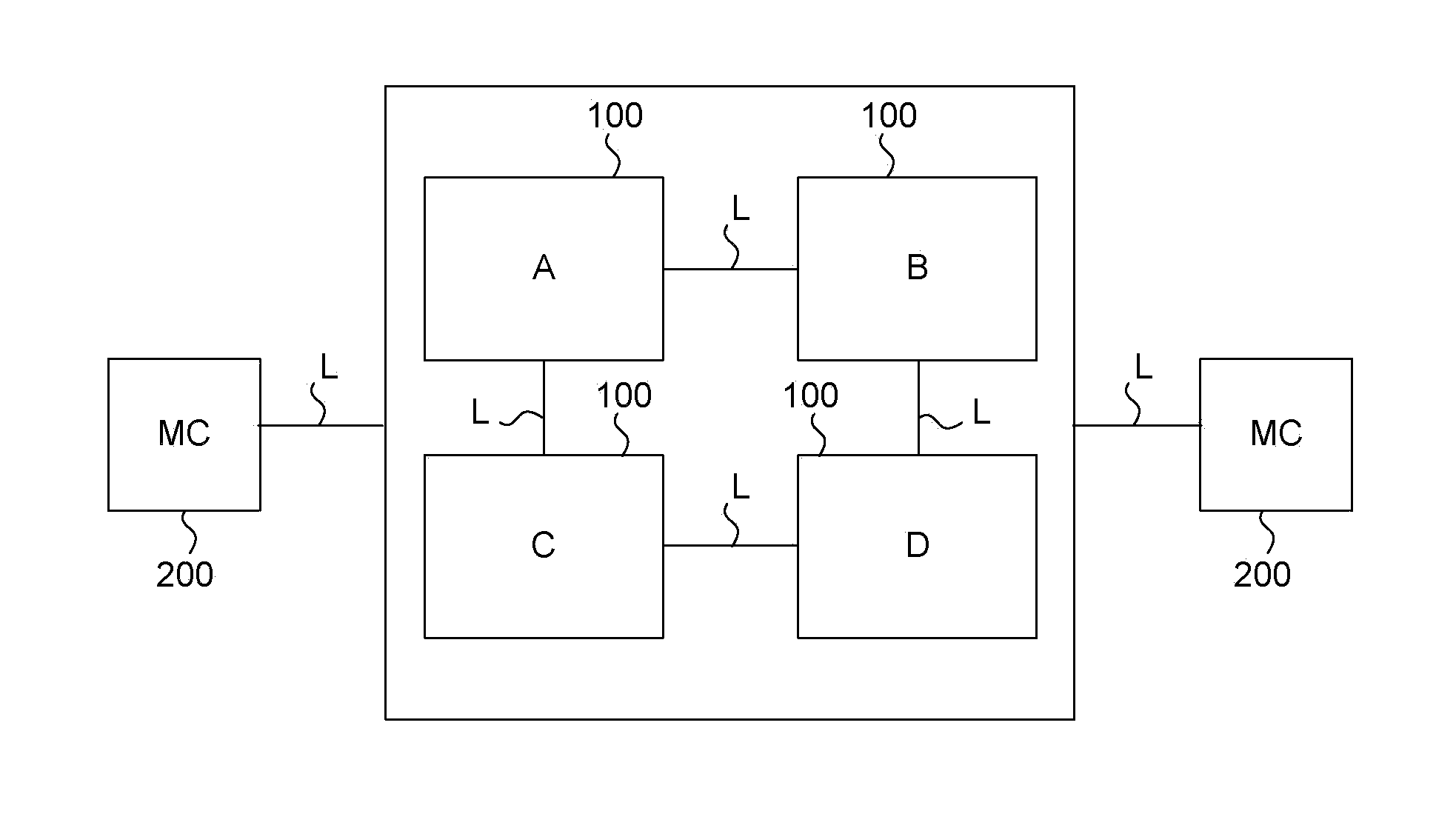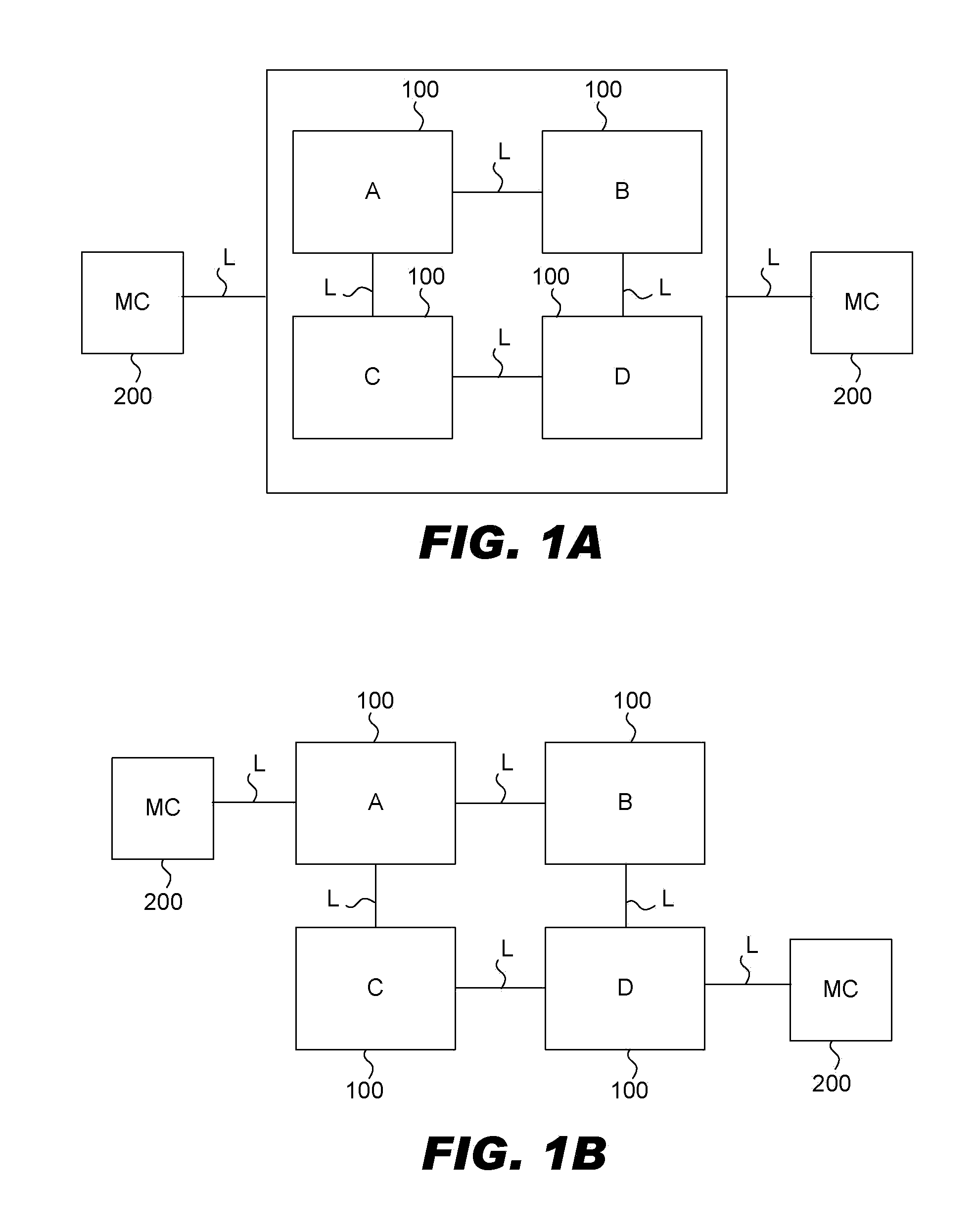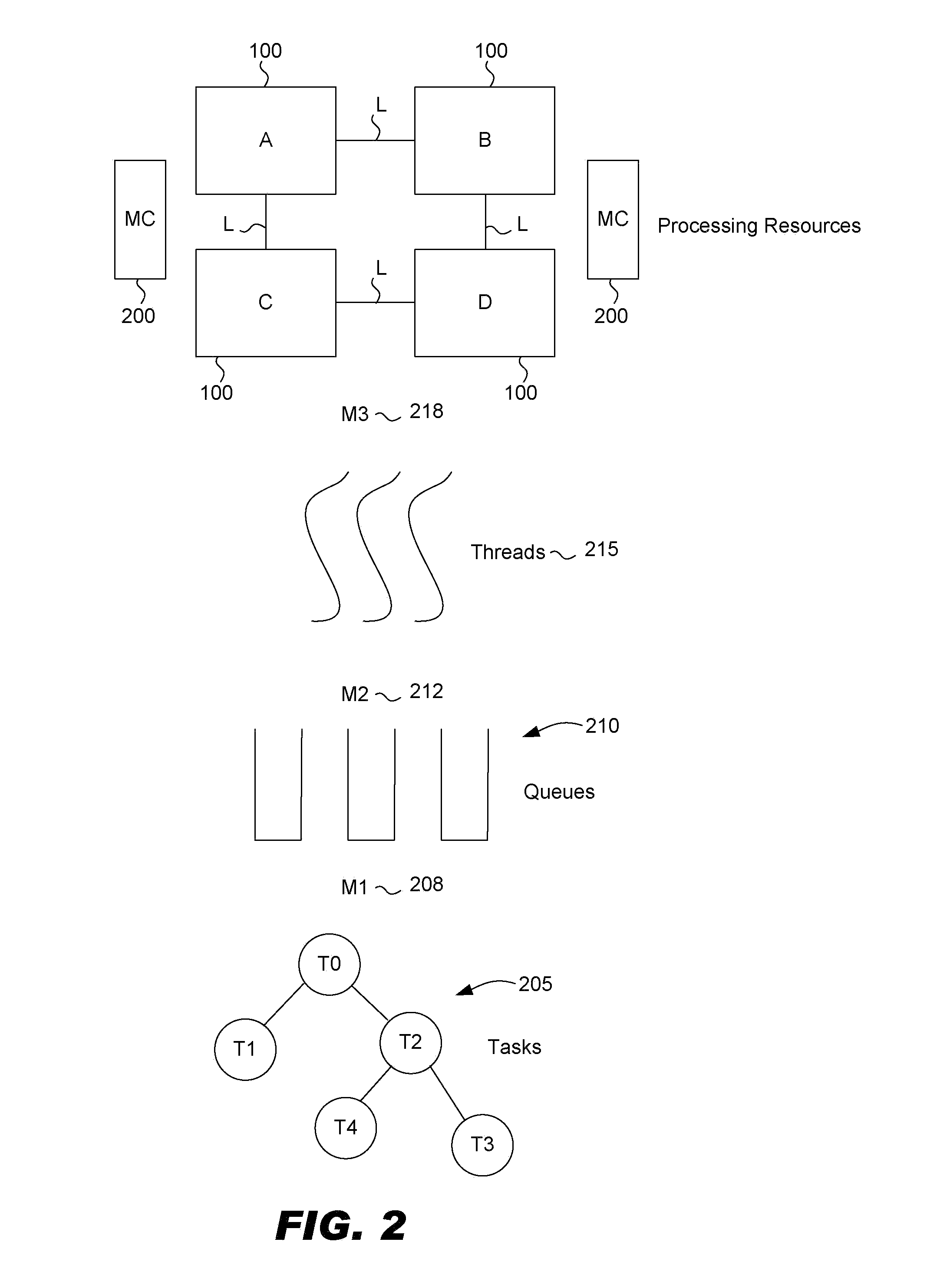Adaptive queuing methodology for system task management
a task management and queuing technology, applied in the field of task management, can solve the problems of inherently difficult tasks, multithreaded programming is relatively heavy, does not scale well, and may or may not fully cache coherent tasks, so as to reduce contention penalties, reduce queue overhead, and high pressure
- Summary
- Abstract
- Description
- Claims
- Application Information
AI Technical Summary
Benefits of technology
Problems solved by technology
Method used
Image
Examples
Embodiment Construction
[0023]One embodiment of the present invention is a task management scheme that may be used for lightweight task management in a Multiple Instruction Multiple Data (MIMD) architecture. Referring to FIGS. 1A and 1B, in a MIMD architecture there are multiple processor cores 100 coupled by communication links, L. There are also memory controllers 200 in the MIMD architecture to access memory resources. In a Non-Uniform Memory Access (NUMA) architecture the memory access time depends on the memory location relative to a processor. In a NUMA architecture a process can access local memory faster than non-local memory.
[0024]As illustrated in FIG. 2, in a lightweight task management model a sequence of tasks 205 is generated. An individual task may also generate other tasks in a tree of tasks. That is a task T0 may generate child tasks T1 and T2, etc. The tasks are mapped 208 to task queues 210 by a mapping M1. Elements in task queues are mapped 212 to time multiplexed threads 215 of executi...
PUM
 Login to View More
Login to View More Abstract
Description
Claims
Application Information
 Login to View More
Login to View More - R&D
- Intellectual Property
- Life Sciences
- Materials
- Tech Scout
- Unparalleled Data Quality
- Higher Quality Content
- 60% Fewer Hallucinations
Browse by: Latest US Patents, China's latest patents, Technical Efficacy Thesaurus, Application Domain, Technology Topic, Popular Technical Reports.
© 2025 PatSnap. All rights reserved.Legal|Privacy policy|Modern Slavery Act Transparency Statement|Sitemap|About US| Contact US: help@patsnap.com



